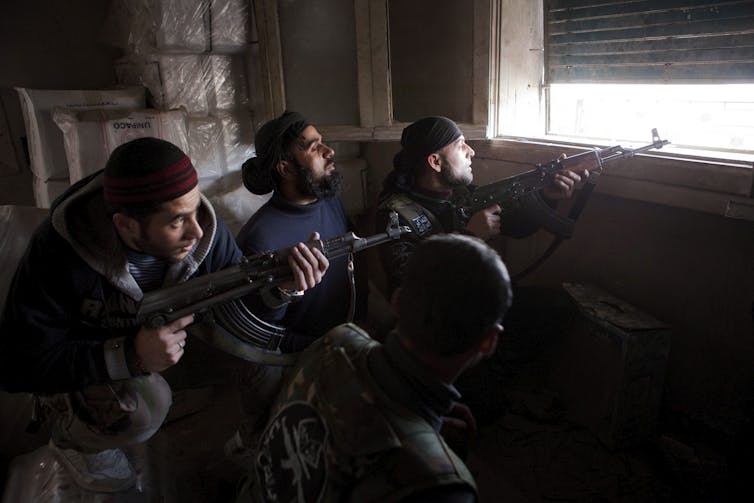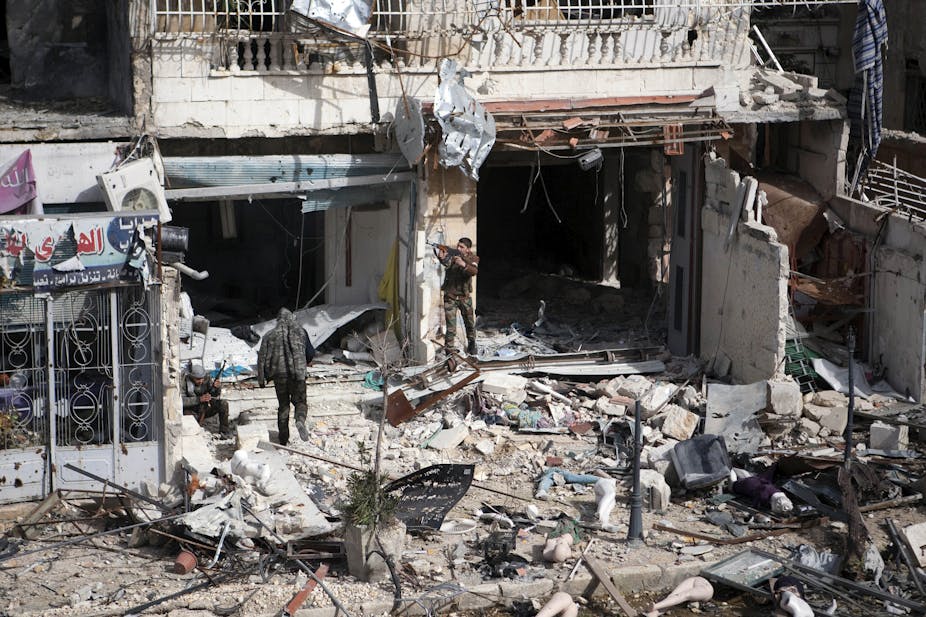The horror of the Syrian conflict appears to know no bounds. Every day brings news of a new atrocity and it is clear that both the rebels and the Assad government are guilty of human rights abuses on an enormous scale.
We are beyond the point where one side can be said to be worse than the other. We are also beyond the point of the Syrian war being seen purely in terms of a rebellion against a dictatorial regime.
It is now largely a sectarian conflict and as the experience in Iraq in the middle of the last decade, and over many years in the north of Ireland, demonstrates, sectarian warfare brings with it a brutality all of its own.
An analysis of the current state of Syria that pays close attention to the antecedents and driving forces behind the sectarian tension and fighting may help to explain the many and varied aspects of this religious, ideological and military crisis.
Within a relatively short space of time, the situation in Syria deteriorated into a war that not only involves governments, but also ideological/political groups, non-state militants, multi-national corporations and, most importantly, sectarian groups.

It is crucial to recognise the fact that the traditional regional powers have turned to Syria as a zone for engaging in sectarian warfare which takes the forms of military attacks, ideological propagation, business affiliations and garnering popular support.
The overwhelming amount of evidence indicating Iran’s collusion with the Syrian government leaves no doubt that not only are significant Shiite factors contributing to the war but, in addition, Hezbollah and the Iraqi Shiites are contributing to the Shiite coalition.
On the other hand, governments including Turkey, Saudi Arabia, Egypt and Qatar, who are either majority Sunni or identify as Sunni-based states, constitute the anti-Syrian government constituency; i.e., representatives of the other side of the equation. The Al-Nusra Front, Ahrar al-Sham, and Al Qaeda fighters from Iraq, Pakistan and other parts of the Sunni Muslim world are also strengthening the anti-Assad resistance.
But the Syrian crisis neither generated nor fuelled the contemporary Muslim sectarian conflict. It is more accurate to understand the situation in Syria as a stage wherein sectarian divisions have taken on new forms and intensity, now possibly claiming centrality in a long-running regional sectarian rivalry.
The history runs deep
The 1979 Iranian Revolution, which was led by Shiite leader Ayatollah Khomeini, was based on an explicitly Shiite political ideology. However, Khomeini and his politico-religious discourse was, from North Africa to South-East Asia, largely perceived as being more Islamic than Shiite. From the time of its initial phase, Khomeini’s discourse was admired by the world’s Muslim population and Islamic movement and reviled by governments in the Muslim world.

One outstanding reaction to Khomeini’s discourse was the promotion of Salafism as a transnational movement with strong Saudi ideological and financial investment. The Taliban and al-Qaeda were two prominent products of the globalisation of Salafi theology.
Simultaneously, Iran invested ideologically, emotionally, financially and militarily in the Shiite sects scattered throughout the Muslim world. Consider, for example, Iran’s financial, political and military support for the Huthis in Yemen, The Shiites of Bahrain, Iraq and Afghanistan and, most importantly, Iran’s intimate and indispensible connections with Hezbollah in Lebanon.
With these historical and political considerations in mind, it is clear to see that the current sectarian conflict playing out in Syria has its roots deeply embedded in the evolution of political Islam from the 1970s onwards. Since that time, a distinct rivalry between the Shiites and the Sunni has persisted based upon political and theological rivalries.
However, with the existence of common enemies in the form of the United States and the former Soviet Union, this opposition expressed itself in the form of a competition vis-a-vis who could direct the most adamant and conspicuous antagonism against the imperialist powers.
In effect, the rivals strived to win the hearts of the Muslim world by challenging the perceived enemies of Islam with great zeal.
As the US withdraws, old tensions resurface
Shifts in US foreign policy and rhetoric instigated by the Obama administration have blunted antagonistic attitudes towards America in the Muslim world. It seems that the notion of an unambiguous and indisputable opposing power that suppresses the Muslim world has become less prominent and that the former external hostility is being redirected internally.

Thus, the situation in Syria is a prime example of how the once latent Sunni-Shiite opposition emerged to become the dominant narrative and most influential factor in the Middle East’s military and political struggles, a factor deeply rooted in the politico-religious dynamics that evolved after the Iranian Revolution.
Clearly, the current sectarian conflict has moved to the forefront of political Islam. It has infiltrated all aspects of the Syrian crisis and is the driving force behind most of the non-Syrian players. As explained above, one must of necessity first take into consideration the ideological and political background to the division in conjunction with the changing face of Sunni-Shiite antagonism before attempting to re-evaluate the situation and analyse the directions it is taking.
This sectarian conflict has deep historical roots, strong theological and ideological dimensions and claims a central place in regional rivalry, all of which contribute to the threat of it turning into the most fundamental dilemma in the region – one that may even outrival the long-running Arab-Israeli conflict.
Sectarianism not only has the capacity to heighten political-military tensions in the region for decades to come, but could also manifest as a particularly brutal chapter in the region’s history.

